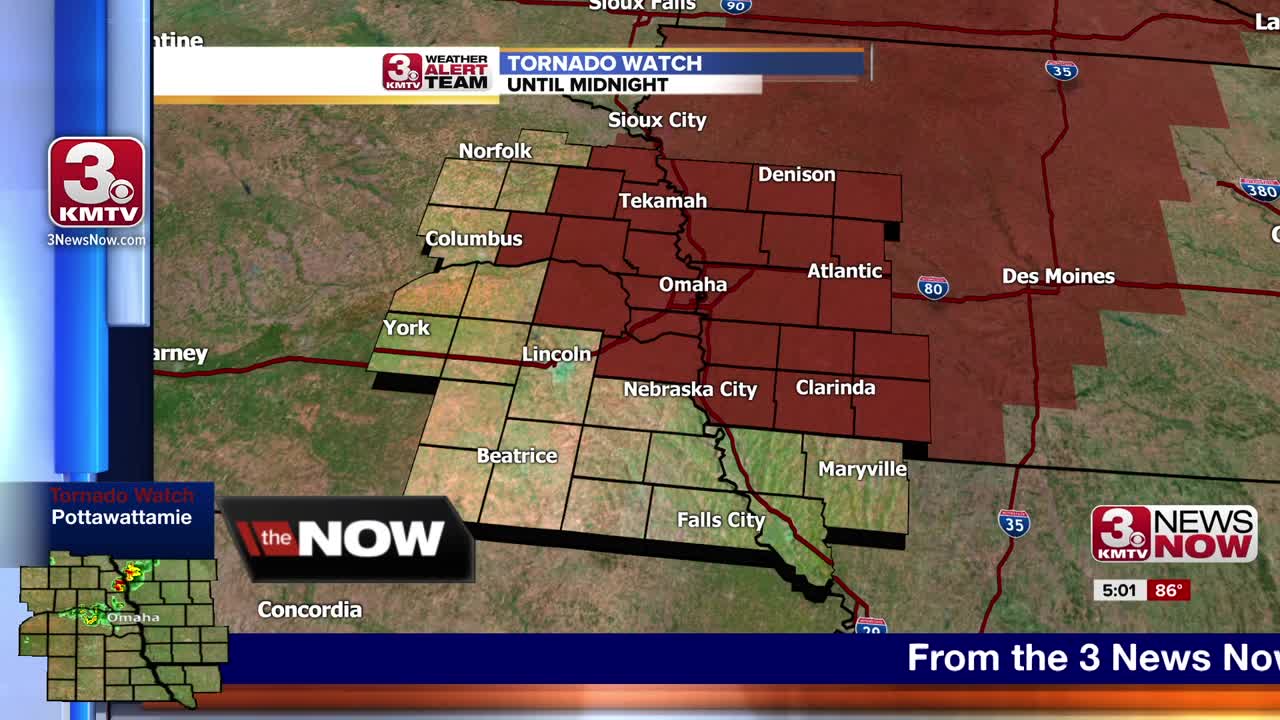
Tornado watch omaha – A tornado watch has been issued for Omaha and the surrounding areas, prompting residents to take precautions and stay informed about potential severe weather.
The National Weather Service issued the watch at [time] and it remains in effect until [time]. The watch area includes Omaha, Council Bluffs, and other communities in eastern Nebraska and western Iowa.
Tornado Watch Omaha
A tornado watch is issued when conditions are favorable for tornadoes to develop. It does not mean that a tornado has been spotted or is imminent, but it is a warning to be prepared and to take shelter if a tornado warning is issued.
The National Weather Service issues tornado watches for Omaha and the surrounding areas when there is a risk of severe thunderstorms that could produce tornadoes. The criteria for issuing a tornado watch include:
- The presence of a thunderstorm with strong updrafts and rotation
- The presence of a dryline or other boundary that can trigger thunderstorm development
- The presence of warm, moist air that can fuel thunderstorm growth
Understand the Impacts of a Tornado Watch Omaha
A tornado watch means that you should be prepared to take shelter if a tornado warning is issued. You should also be aware of the potential impacts of a tornado, which can include:
- High winds that can cause damage to buildings, trees, and power lines
- Hail that can damage cars and property
- Flooding that can occur if a tornado crosses a river or stream
Tornadoes can be very dangerous, and it is important to take shelter if a tornado warning is issued. If you are caught outside during a tornado, you should seek shelter in a sturdy building or underground. You should also avoid driving during a tornado watch, as tornadoes can develop quickly and without warning.
Safety Precautions for Tornado Watch Omaha
There are a number of safety precautions you can take during a tornado watch, including:
- Have an emergency plan in place and know where you will go if a tornado warning is issued.
- Identify a sturdy building or underground shelter where you can take cover.
- Stay away from windows and doors.
- If you are outside, seek shelter in a sturdy building or underground. If you cannot find a sturdy building, lie down in a ditch or other low-lying area and cover your head with your hands.
- Do not drive during a tornado watch, as tornadoes can develop quickly and without warning.
Monitoring and Staying Informed Tornado Watch Omaha
There are a number of ways to monitor and stay informed about tornado watches in Omaha, including:
- Listen to local weather forecasts on the radio or television.
- Sign up for weather alerts from the National Weather Service.
- Download a weather app on your phone.
- Follow the National Weather Service on social media.
It is important to stay informed about tornado watches and to take the necessary precautions to stay safe.
Resources for Tornado Watch Omaha
There are a number of resources available to the Omaha community during a tornado watch, including:
- The National Weather Service: https://www.weather.gov/omaha
- The Omaha Police Department: https://www.omahapolice.org
- The Douglas County Emergency Management Agency: https://www.douglascountyemergencymanagement.org
These organizations can provide you with the latest information on tornado watches and warnings, as well as safety tips and resources.
Ultimate Conclusion

Residents in the affected areas are urged to monitor weather forecasts and warning systems closely, and to have an emergency plan in place in case of a tornado warning.
FAQ Explained
What should I do during a tornado watch?
During a tornado watch, you should stay informed about the weather, have a plan for where to go if a warning is issued, and be prepared to take shelter if necessary.
What is the difference between a tornado watch and a tornado warning?
A tornado watch means that conditions are favorable for tornadoes to develop, while a tornado warning means that a tornado has been spotted or indicated by radar.
Where can I find more information about tornado safety?
You can find more information about tornado safety from the National Weather Service, the American Red Cross, and your local emergency management office.





